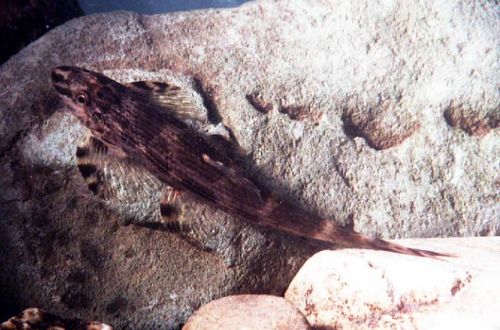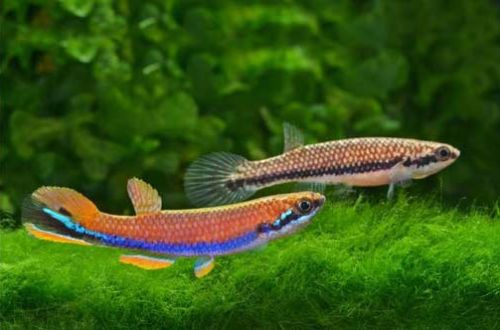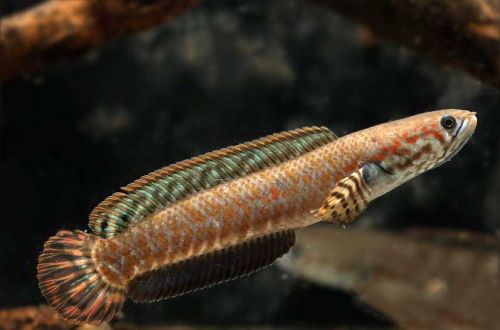
Homalopter Stevenson
Stevenson’s Homaloptera, scientific name Homalopteroides stephensoni, belongs to the family Balitoridae (river chars). The fish is named after John Stevenson (1871–1933), professor of biology at Government College Lahore (Pakistan), who made a significant contribution to the study of the fauna of the islands of Southeast Asia.

Contents
Habitat
It is endemic to the island of Kalimantan (Borneo) in Southeast Asia. Inhabits shallow fast-flowing rivers and streams flowing down mountainous terrain. Substrates consist of boulders, stones, gravel, aquatic vegetation is rare.
Brief information:
- The volume of the aquarium – from 50 liters.
- Temperature – 20-25°C
- Value pH — 6.0–7.5
- Water hardness – soft to medium hard (1-14 dGH)
- Substrate type — stony
- Lighting – moderate
- Brackish water – no
- Water movement is strong
- The size of the fish is about 6 cm.
- Nutrition – protein-rich food, sinking
- Temperament – peaceful
- Content alone or in a group
Description
Adults reach a length of about 6 cm. It has an elongated slender body with a pointed head. Large pelvic and pectoral fins are oriented horizontally and help the fish to cling tightly to the stones and stay in place, resisting a strong current. The color is gray with large dark spots of a rounded shape. When viewed from above, this coloring allows you to merge with the rocky bottom.
Food
In nature, it feeds on small invertebrates, which it seeks out among the stones. In a home aquarium, fresh, frozen or live brine shrimp, bloodworms, daphnia and other similar foods should be the basis of the diet. In addition, dry sinking or bottom-fixed foods rich in protein can be used.
Maintenance and care, arrangement of the aquarium
If possible, the design of the aquarium should resemble the bottom of a mountain river: rocky soil with several large boulders, snags, you can place several hardy living plants, mosses or ferns that can be fixed on any surface. It is important to ensure a strong internal current, with a turnover rate of 10-15 times per hour, i.e. a filter or pump for an aquarium of 100 liters must pump over 1000 liters of water in one hour.
For long-term maintenance, close to neutral pH values, medium carbonate hardness and high dissolved oxygen content are required. Being native to flowing waters, Stevenson’s Homaloptera does not tolerate the accumulation of organic waste (food leftovers, excrement), which must be regularly removed from the aquarium. This procedure is recommended to be combined with a partial replacement of water with fresh water.
Behavior and Compatibility
Not an aggressive calm fish, although its habitat limits the number of possible tankmates. As compatible species, we can consider closely related Homalopters, non-aggressive and non-territorial charrs, as well as representatives of fish from other groups that can live in conditions of a fast current.
Fish diseases
The best guarantee against the occurrence of diseases is to keep the fish in suitable conditions, receive a balanced diet and the absence of external threats, such as attacks from tankmates. The appearance of signs of illness can be a signal that there are problems in the content. Usually, bringing the habitat back to normal contributes to self-healing, but if the body of the fish has suffered too much, then medical treatment will be required. Read more about symptoms and treatments in the Aquarium Fish Diseases section.





